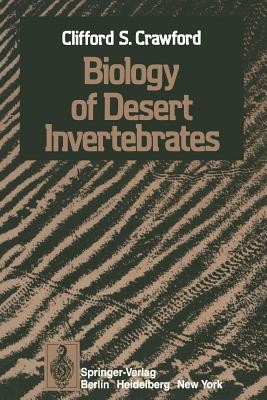
- We will send in 10–14 business days.
- Author: C S Crawford
- Publisher: Springer
- Year: 2012
- Pages: 314
- ISBN-10: 3642857965
- ISBN-13: 9783642857966
- Format: 15.6 x 23.4 x 1.8 cm, minkšti viršeliai
- Language: English
- SAVE -10% with code: EXTRA
Reviews
Description
What little we know of the biology of desert invertebrates stems largely from inferences based on intensive and repeated observations. Such informa- tion is not gained easily, since despite the actual abundance of these animals, relatively few of them are ever seen. In fact, except for species impacting on the well-being of human populations, historically most have been ignored by scholars in the western world. Indeed, it was ancient Egypt, with its reverence for the symbolism of the scarab, that probably provided us with the clearest early record of prominent desert types. A more modest resurgence of the story had to wait until the arrival of the present century. To be sure, some of the more obvious species had by then been elevated by European collectors to the level of drawing-room curios- ities, and expeditions had returned large numbers to museums. But by 1900 the task of describing desert species and relationships among them was still in its infancy; and as for careful natural history studies, they too were just coming into their own.
EXTRA 10 % discount with code: EXTRA
The promotion ends in 21d.10:44:38
The discount code is valid when purchasing from 10 €. Discounts do not stack.
- Author: C S Crawford
- Publisher: Springer
- Year: 2012
- Pages: 314
- ISBN-10: 3642857965
- ISBN-13: 9783642857966
- Format: 15.6 x 23.4 x 1.8 cm, minkšti viršeliai
- Language: English English
What little we know of the biology of desert invertebrates stems largely from inferences based on intensive and repeated observations. Such informa- tion is not gained easily, since despite the actual abundance of these animals, relatively few of them are ever seen. In fact, except for species impacting on the well-being of human populations, historically most have been ignored by scholars in the western world. Indeed, it was ancient Egypt, with its reverence for the symbolism of the scarab, that probably provided us with the clearest early record of prominent desert types. A more modest resurgence of the story had to wait until the arrival of the present century. To be sure, some of the more obvious species had by then been elevated by European collectors to the level of drawing-room curios- ities, and expeditions had returned large numbers to museums. But by 1900 the task of describing desert species and relationships among them was still in its infancy; and as for careful natural history studies, they too were just coming into their own.


Reviews